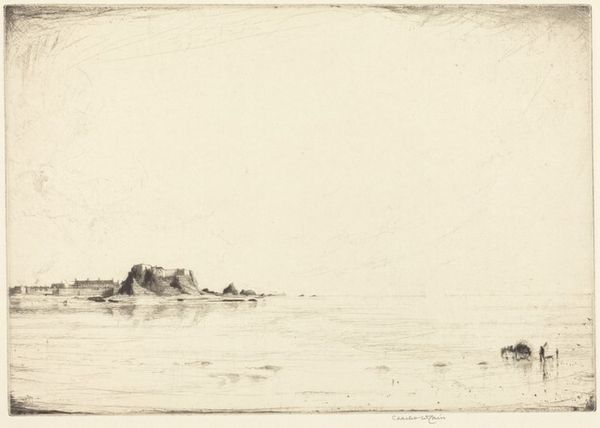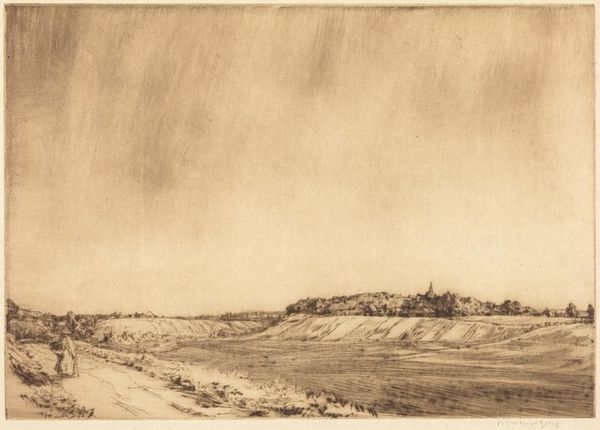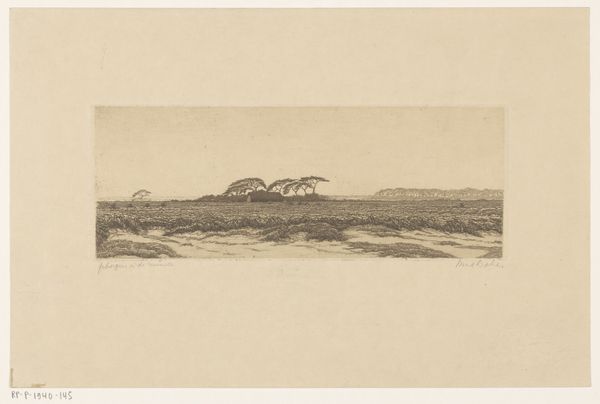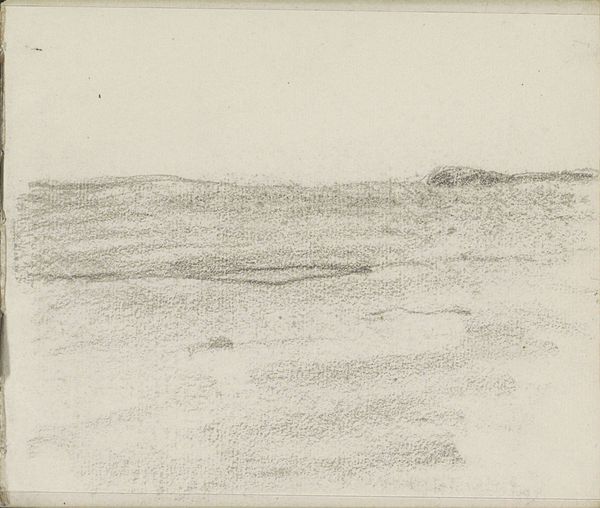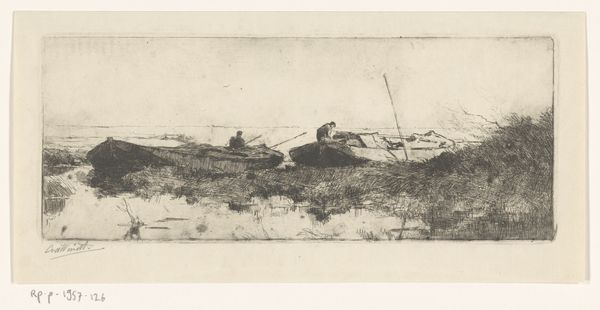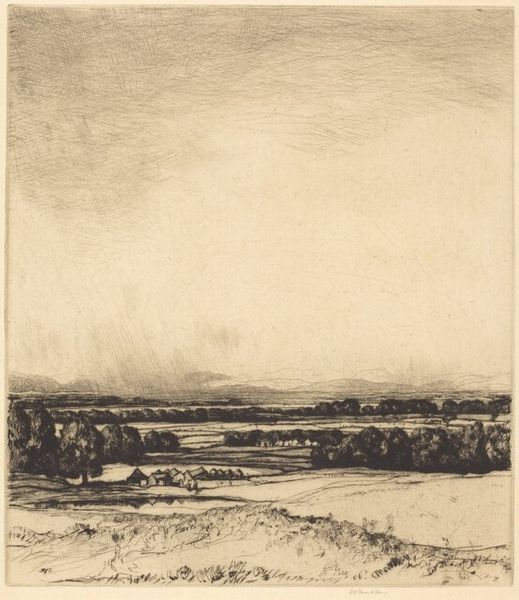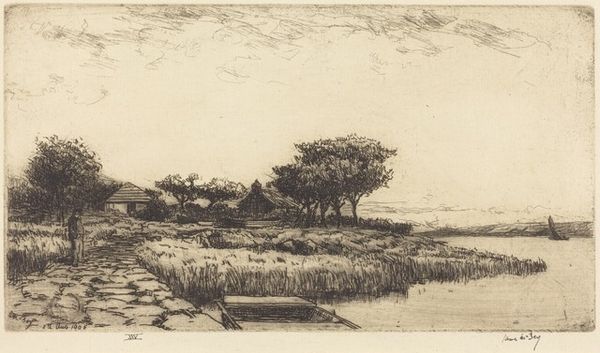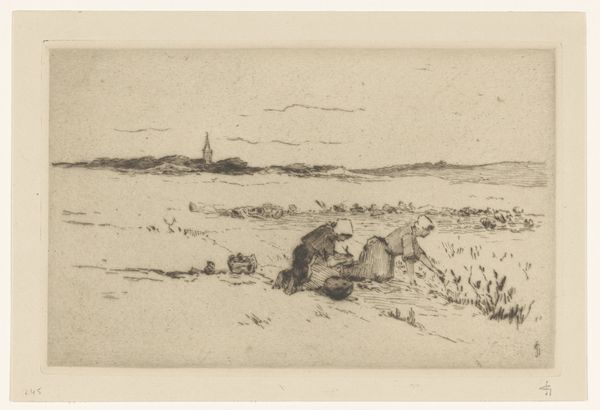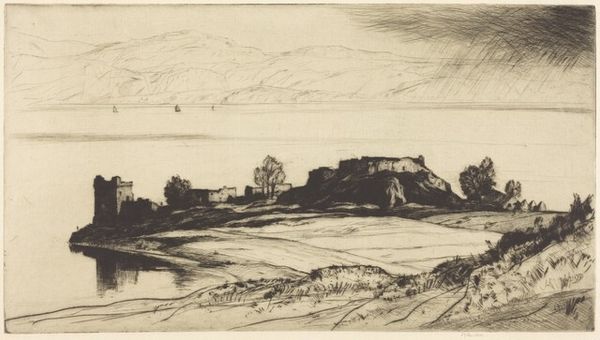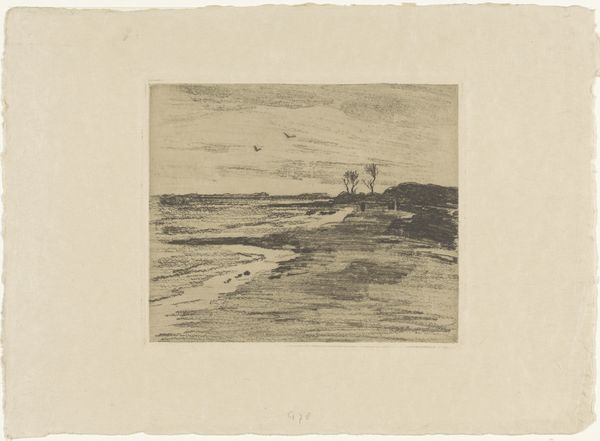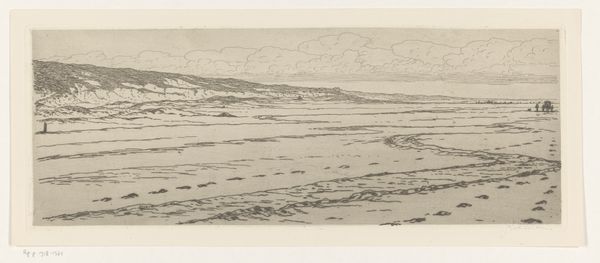
#
pencil drawn
#
amateur sketch
#
light pencil work
# print
#
pencil sketch
#
old engraving style
#
incomplete sketchy
#
pencil drawing
#
ink drawing experimentation
#
pen-ink sketch
#
pencil work
Copyright: National Gallery of Art: CC0 1.0
Editor: This is James McBey's "Richborough Castle," a print from 1912. There’s something quite ghostly and remote about it, like a memory fading. What do you see in it? Curator: Fading… that's it! The open sky looms large. Is it inviting or isolating? It all depends where you are at. It whispers of histories barely held in the landscape. What was life like at that time for those whose castle this was? And does the way McBey sketched the work hint at the passage of time blurring the image from our consciousness? Does it feel distant to you because it *is* distant? Editor: That's a cool way to put it. It’s less about showing a detailed image of the Castle, and more about the way the Castle interacts with time? Curator: Precisely! Maybe McBey is also suggesting the impermanence of power and civilization. Look at the roughness, how the light catches and glances in the print's technique. Does it spark thoughts about the stories this old ruin could tell, if only stone could speak? Editor: Absolutely, it’s like trying to grasp something that's just out of reach. You almost need to squint. Curator: And sometimes the things worth truly grasping are just out of our reach – and so become idealised, made into something greater. Perhaps that’s why artists represent them through suggestion, a blurred ideal to be forever contemplated and enjoyed. Editor: It’s fascinating how a simple print can be such a doorway into history, and to ideas about how we view that history too. I didn't realize it was such a doorway when I first saw the work. Thanks! Curator: You're very welcome. Every viewing shifts how that doorway looks; it’s that dynamism that makes art an unfolding conversation with time.
Comments
No comments
Be the first to comment and join the conversation on the ultimate creative platform.
